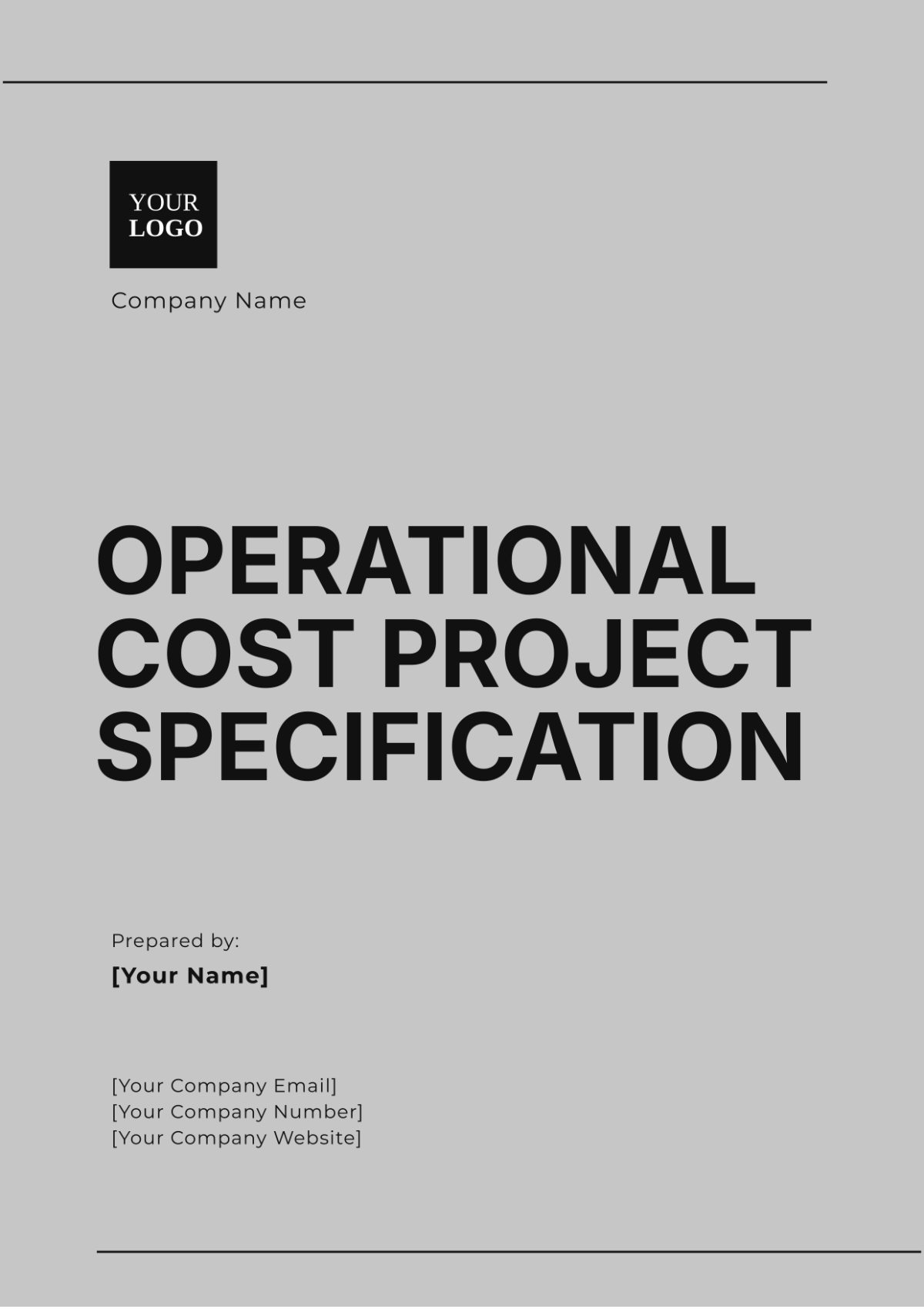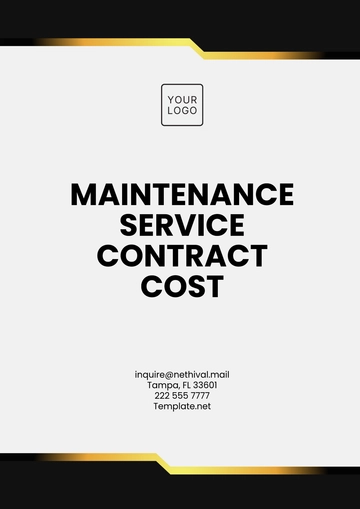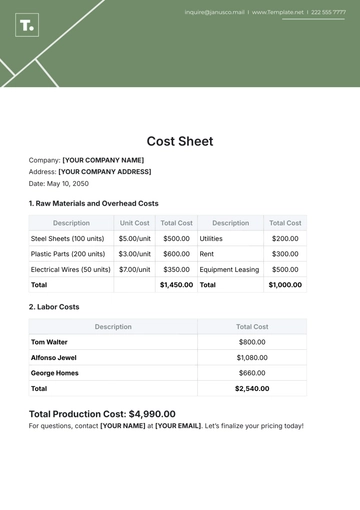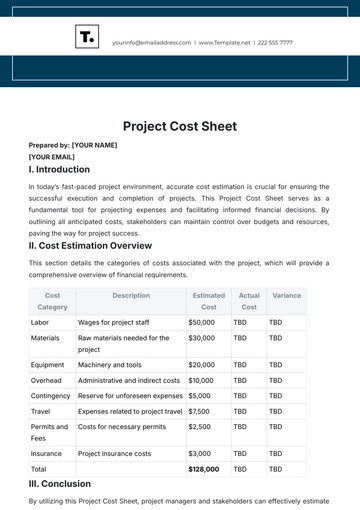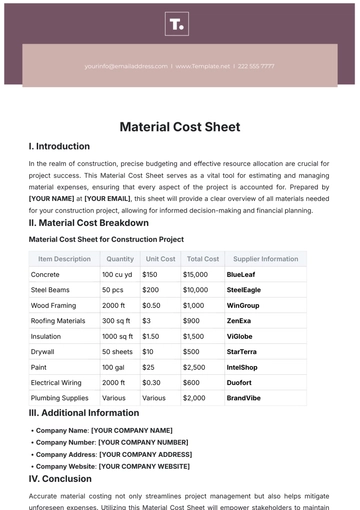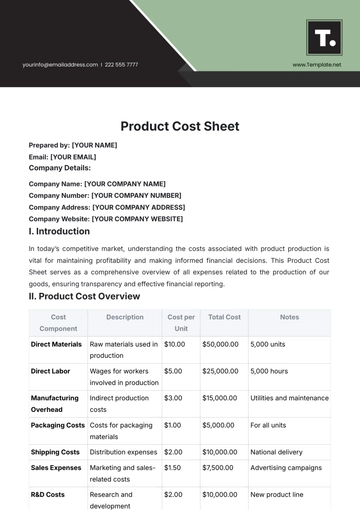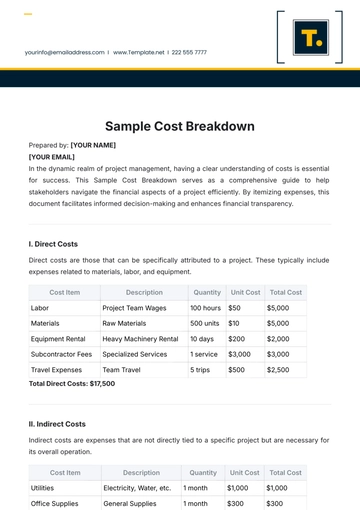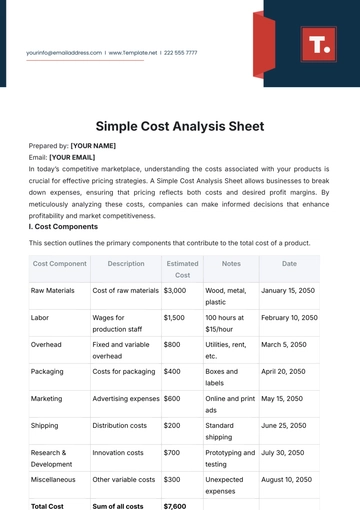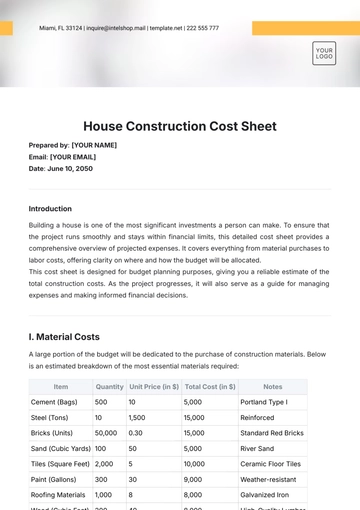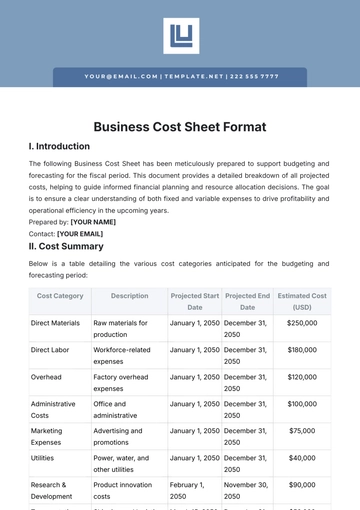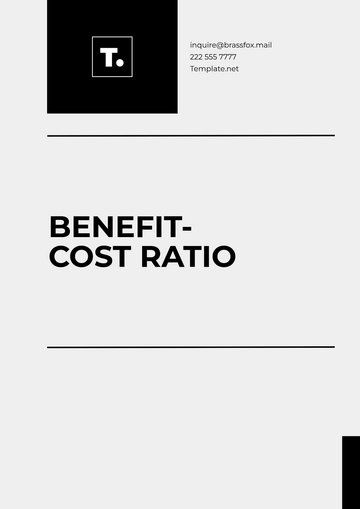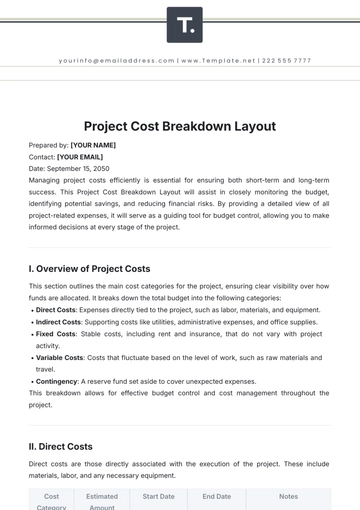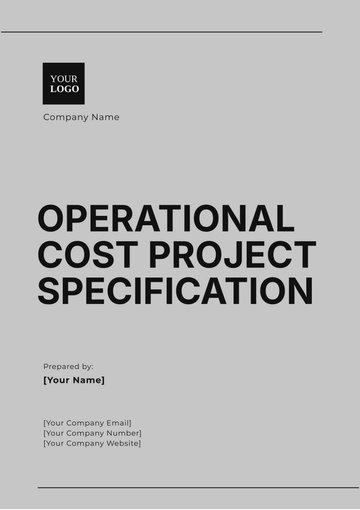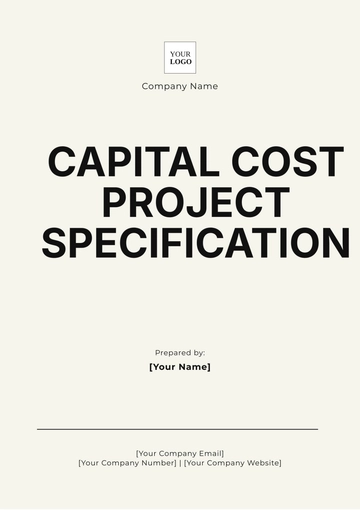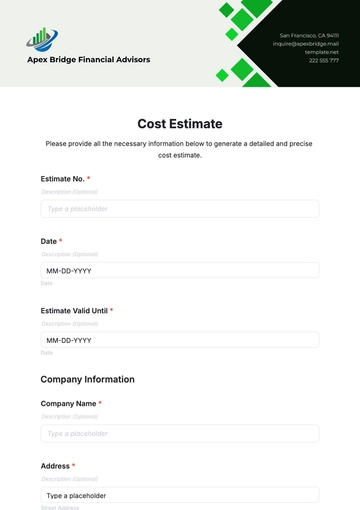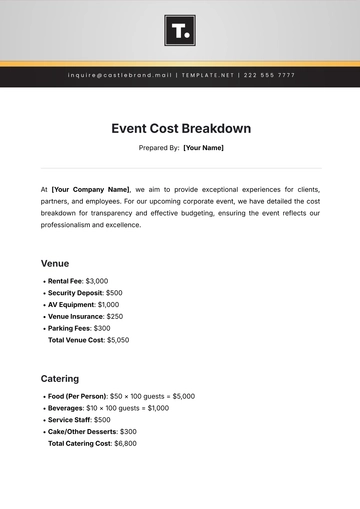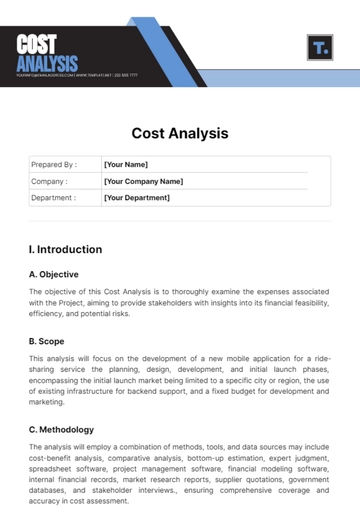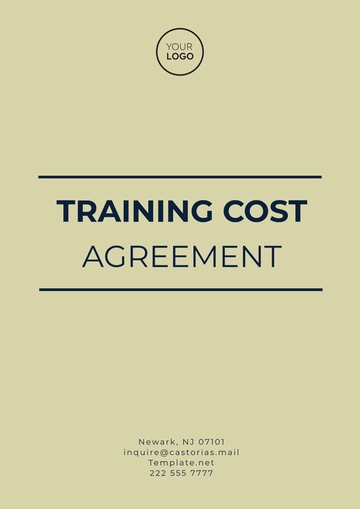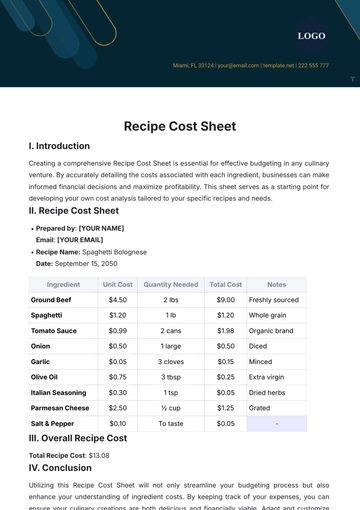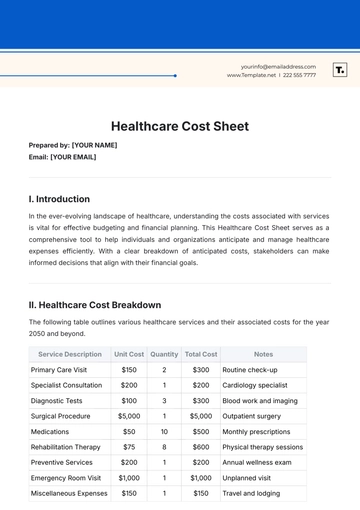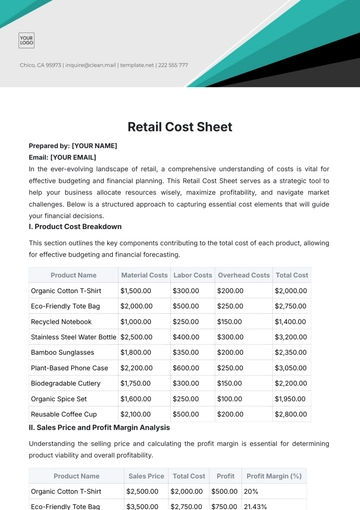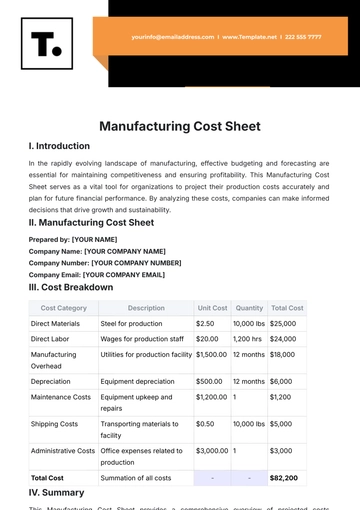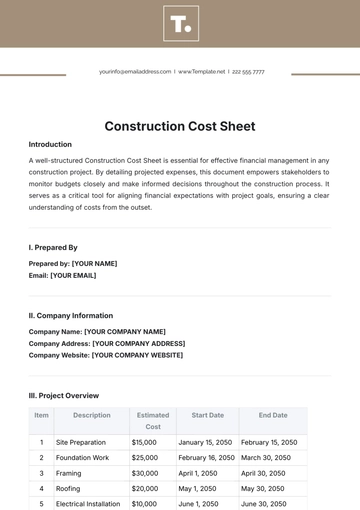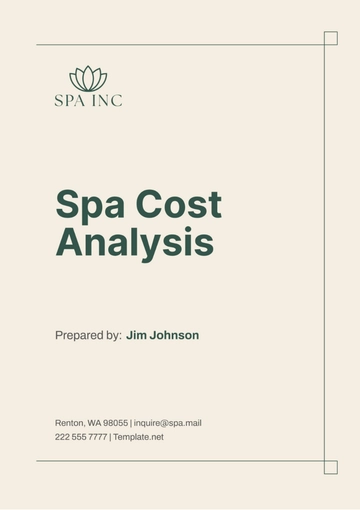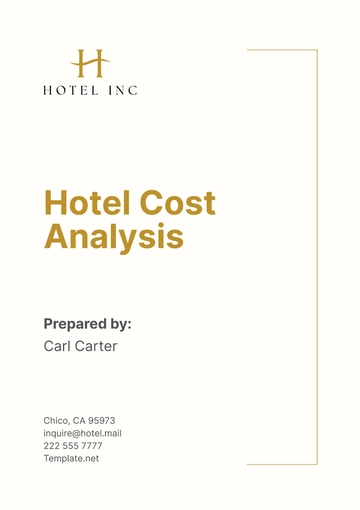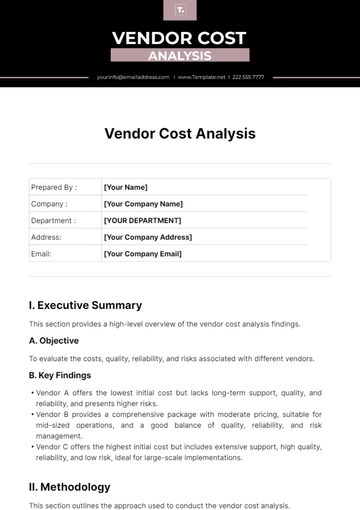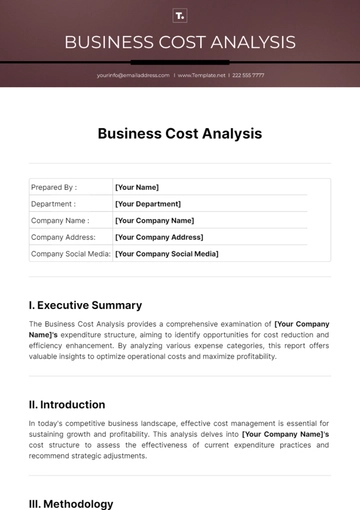Operational Cost Project Specification
1. Project Overview
1.1 Project Purpose
The Operational Cost Project aims to analyze and optimize the operational costs associated with [Your Company Name]. By identifying key cost drivers and analyzing current expenditure patterns, the project seeks to uncover cost-saving opportunities and enhance overall efficiency within the organization.
1.2 Project Objectives
Identify Cost Drivers: Determine the primary factors contributing to operational expenses, such as labor, materials, and overheads.
Analyze Cost Data: Examine historical cost data from the past three years to identify trends, anomalies, and areas of inefficiency.
Optimize Expenses: Recommend actionable strategies to reduce unnecessary expenses and improve cost management practices.
Implement Cost Control Measures: Develop and deploy mechanisms to control and monitor costs effectively across departments.
2. Scope of Work
2.1 Inclusions
Cost Analysis: Comprehensive analysis of operational expenses across departments, including HR, IT, and Facilities Management.
Benchmarking: Compare current expenses with industry standards and best practices to identify areas of improvement.
Expense Categorization: Breakdown of costs into categories, such as fixed, variable, and semi-variable.
Recommendation Report: A detailed report with actionable recommendations for cost reduction, including cost-saving initiatives and process improvements.
2.2 Exclusions
Capital Expenditures: The project does not cover the analysis of capital expenditures, such as machinery or infrastructure investments.
Revenue Analysis: This project does not include revenue generation strategies and performance.
3. Deliverables
3.1 Reports
Initial Findings Report: Summary of preliminary findings, including identified cost drivers and preliminary observations (due at the end of week 2).
Detailed Analysis Report: An in-depth report featuring data visualizations, trend analysis, and detailed insights into operational costs (due at the end of Week 6).
Final Recommendations Report: A comprehensive report outlining strategies for cost reduction, including specific action plans and expected savings (due at the end of week 8).
3.2 Presentations
Stakeholder Presentation: A high-level summary of findings and recommendations for executive stakeholders, including key decision-makers (scheduled for week 9).
Departmental Briefings: Detailed presentations for individual departments, including tailored recommendations and implementation plans (scheduled for week 9).
4. Methodology
4.1 Data Collection
Data Sources: Financial statements, expense reports, departmental budgets, and historical cost data.
Data Collection Methods: Surveys to gather departmental insights, interviews with key stakeholders, and analysis of existing financial documents.
4.2 Data Analysis
Analytical Tools: Use of statistical software and data visualization tools.
Techniques: Trend analysis to identify cost patterns, variance analysis to compare actual vs. budgeted costs, and cost-benefit analysis to evaluate potential savings.
4.3 Implementation
Pilot Testing: Implementation of cost-saving measures in selected departments such as IT and Facilities Management to test effectiveness (starting in week 7).
Full Implementation: Roll-out of successful cost control measures organization-wide, including training and support for affected departments (starting in week 9).
5. Timeline
Phase | Description | Duration |
|---|
Phase 1: | Project Initiation | 2 weeks |
Phase 2: | Data Collection and Analysis | 4 weeks |
Phase 3: | Development of Recommendations | 2 weeks |
Phase 4: | Implementation and Monitoring | 6 weeks |
Phase 5: | Final Reporting and Project Closure | 2 weeks |
6. Budget
Category | Estimated Cost |
|---|
Data Collection | $5,000 |
Analysis Tools | $3,000 |
Consultant Fees | $10,000 |
Implementation | $7,000 |
Miscellaneous | $2,000 |
Total | $27,000 |
7. Roles and Responsibilities
7.1 Project Manager
7.2 Financial Analyst
7.3 Department Heads
8. Risk Management
8.1 Potential Risks
8.2 Mitigation Strategies
Data Verification: Implement cross-checks and validation procedures to ensure data accuracy.
Change Management: Engage with stakeholders early in the process and provide clear communication and support for changes.
9. Success Criteria
9.1 Key Performance Indicators (KPIs)
Cost Reduction Achieved: Measure the percentage reduction in operational costs compared to baseline figures.
Implementation Rate: Track the percentage of recommended measures successfully implemented across departments.
Stakeholder Satisfaction: Gather feedback from stakeholders on the impact and effectiveness of the project.
9.2 Evaluation
Regular Reviews: Conduct periodic reviews to assess the effectiveness of implemented measures and make adjustments as needed.
Post-Implementation Audit: Perform a comprehensive audit to evaluate overall success, identify areas for further improvement, and ensure sustainability of cost-saving measures.
10. Conclusion
The Operational Cost Project is designed to provide a thorough analysis of current operational expenses and develop actionable strategies to optimize costs. Successful implementation of this project will result in significant cost savings and improved operational efficiency for the organization.
Project Specification Templates @ Template.net
